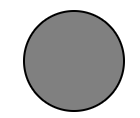SVG defines vector-based graphics in XML format. Scalable Vector Graphics (SVG) are an XML-based markup language for describing two-dimensional based vector graphics. SVG is, essentially, to graphics what HTML is to text. SVG images and their related behaviors are defined in XML text files, which means they can be searched, indexed, scripted, and compressed.
- SVG stands for Scalable Vector Graphics
- SVG is used to define graphics for the Web
- SVG is a W3C recommendation
How do I SVG an image in HTML?
SVG images can be written directly into the HTML document using the <svg> </svg> tag. To do this, open the SVG image in VS code or your preferred IDE, copy the code, and paste it inside the <body> element in your HTML document. If you did everything correctly, your webpage should look exactly like the demo below.
Is there an SVG tag HTML?
The HTML <svg> element is a container for SVG graphics. SVG has several methods for drawing paths, boxes, circles, text, and graphic images.
Advantages of SVG: Advantages of using SVG over other image formats (like JPEG and GIF) are:
- SVG images can be created and edited with any text editor.
- SVG images can be searched, indexed, scripted, and compressed.
- SVG images are scalable.
- SVG images can be printed with high quality at any resolution.
The HTML <svg> Element
The HTML <svg> element is a container for SVG graphics. SVG has several methods for drawing paths, boxes, circles, text, and graphic images.
SVG Circle

Example
<!DOCTYPE html> <html> <body> <svg width="100" height="100"> <circle cx="50" cy="50" r="40" stroke="green" stroke-width="4" fill="yellow" /> </svg> </body> </html>
SVG Rectangle

Example
<svg width="400" height="100"> <rect width="400" height="100" style="fill:rgb(0,0,255);stroke-width:10;stroke:rgb(0,0,0)" /> </svg>
SVG Rounded Rectangle

Example
<svg width="400" height="180"> <rect x="50" y="20" rx="20" ry="20" width="150" height="150" style="fill:red;stroke:black;stroke-width:5;opacity:0.5" /> </svg>
SVG Star

Example
<svg width="300" height="200"> <polygon points="100,10 40,198 190,78 10,78 160,198" style="fill:lime;stroke:purple;stroke-width:5;fill-rule:evenodd;" /> </svg>
SVG Logo

Example
<svg height="130" width="500">
<defs>
<linearGradient id="grad1" x1="0%" y1="0%" x2="100%" y2="0%">
<stop offset="0%" style="stop-color:rgb(255,255,0);stop-opacity:1" />
<stop offset="100%" style="stop-color:rgb(255,0,0);stop-opacity:1" />
</linearGradient>
</defs>
<ellipse cx="100" cy="70" rx="85" ry="55" fill="url(#grad1)" />
<text fill="#ffffff" font-size="45" font-family="Verdana" x="50" y="86">SVG</text>
Sorry, your browser does not support inline SVG.
</svg>Differences Between SVG and Canvas
SVG is a language for describing 2D graphics in XML. Canvas draws 2D graphics, on the fly (with a JavaScript). SVG is XML based, which means that every element is available within the SVG DOM. You can attach JavaScript event handlers for an element. In SVG, each drawn shape is remembered as an object. If attributes of an SVG object are changed, the browser can automatically re-render the shape. Canvas is rendered pixel by pixel. In canvas, once the graphic is drawn, it is forgotten by the browser. If its position should be changed, the entire scene needs to be redrawn, including any objects that might have been covered by the graphic.
- SVG is a language for describing 2D graphics in XML whereas Canvas draws 2D graphics, on the fly with JavaScript.
- If attributes of an SVG object are changed, the browser can automatically re-render the shape whereas Canvas is rendered pixel by pixel. In canvas, once the graphic is drawn, it is forgotten by the browser.
- SVG is resolution independent whereas CANVAS is resolution-dependent.
- SVG supports event handlers whereas CANVAS doesn’t have support for event handlers.
Comparison of Canvas and SVG
The table below shows some important differences between Canvas and SVG:
| Canvas | SVG |
|---|---|
| Resolution dependentNo support for event handlersPoor text rendering capabilitiesYou can save the resulting image as .png or .jpgWell suited for graphic-intensive games | Resolution independentSupport for event handlersBest suited for applications with large rendering areas (Google Maps)Slow rendering if complex (anything that uses the DOM a lot will be slow)Not suited for game applications |


